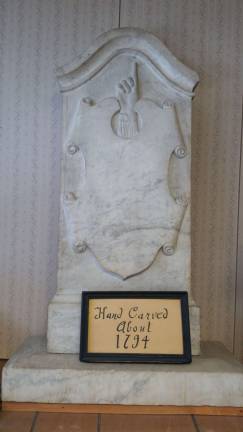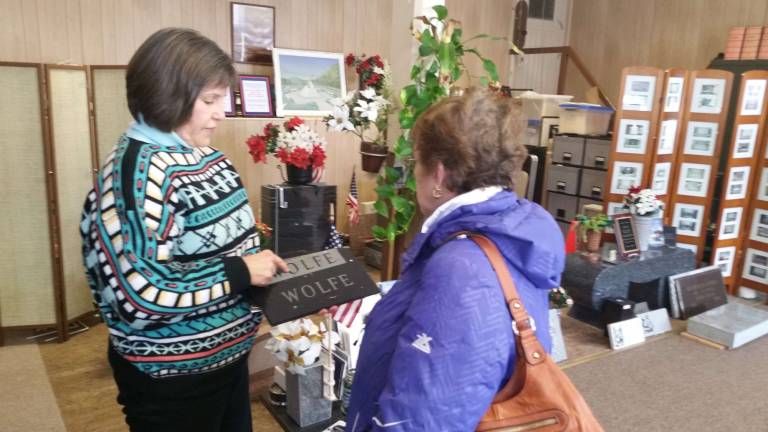Wolfe Granite rocks on


SUSSEX — What’s more solid than the Rock of Gibraltar? Granite, of course. Though not quite as old as the Iberian monolith, Wolfe Granite Memorials has been a Sussex Borough landmark since 1873.
Longtime businessFounded on April 1 of that year by A.E. Wolfe on the site of the former Morrison’s Hotel on Newton Avenue, the business moved to its current location at 86 Main Street in 1903.
“There were only four other owners until my parents, Elsie and John De Block, bought the business in 1980,” says Nancy Bookbinder, who purchased the company from her parents in 2002 and has managed it ever since.
Wolfe Granite Memorials offers customized cemetery monuments to memorialize departed loved ones.
Working at a desk under an ornate white monument with a label that says ‘Hand Carved about 1794,’ Bookbinder helps family members and friends make appropriate decisions based on how they would like the person to be remembered and where they will be interred.
“There is a wide range of different colors of granite,” says Bookbinder, noting that although a type of stone called ‘North American Pink’ is popular, she also imports stone from as far away as India, China and Norway, where darker stone is quarried.
“There are certain styles of lettering that go better with certain colors,” she says, “and it is important that the lettering be readable and look good.”
Bookbinder helps ensure enduring readability and style with a personal service that internet-based competitors cannot offer. She also helps her customers navigate the maze of rules and restrictions that cemeteries place on size, height and other features of a monument.
ChangesAs one might suppose, there have been more than a few changes in the industry in the 142 years that Wolfe Granite Memorials has been around.
In its earlier days, the Wolfe family used to hand carve the names, dates and other script on the stone, which was brought to Sussex from Barre, Vermont. Now, the memorials are designed on a computer program, which is used to cut stencils. The stencils are then placed over the polished stone to be sandblasted into the granite.
There are a few things that are still hand-carved, such as a rough top of a headstone or the addition of a date of death on a shared monument. Recent trends include the addition of a picture of the loved one on the monument, as well as innovative ways to inter cremated remains, such as benches.